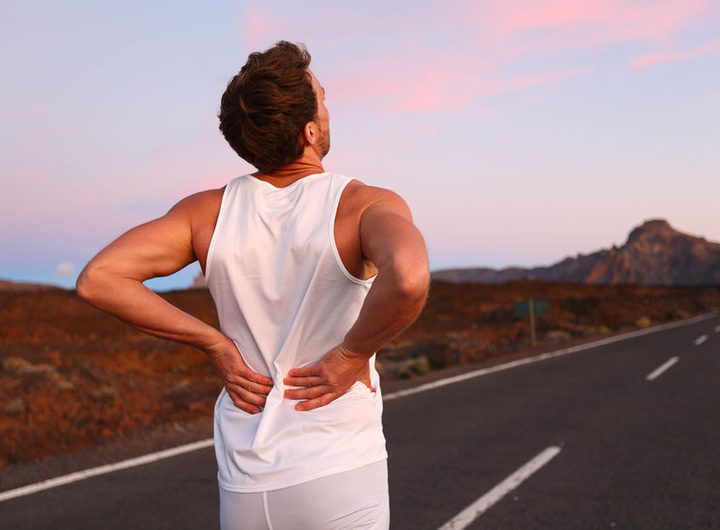|
Spinal stenosis is a conditioned characterized by the abnormal narrowing of the spinal canal (1). This narrowing compresses the spinal cord and/or the nearby nerves and can cause symptoms that travel from the spine to the arms and legs. It is most commonly seen in patients 50+ years, often caused by the degenerative and arthritic changes related to osteoarthritis. Spinal stenosis predominantly occurs in the lumbar (lower back) and cervical (neck) spine. It is diagnosed with an MRI scan or a CT scan with myelogram (using an X-ray dye in the spinal sac fluid), and sometimes both.
A lot of people do not feel any effects of the narrowing of the spinal canal, but with increasing degenerative changes associated with aging, most people will eventually notice radiating pain, tingling, numbness, or weakness in the arms or legs, secondary to the compression of the spinal nerves or spinal cord. When a person is symptomatic, lumbar (lower back) spinal stenosis causes weakness in the lower back, buttocks, thigh, calf, foot, and claudicating pain (1). Pain is often worse with long periods of standing or walking. When cervical (neck) spinal stenosis is symptomatic, people can experience tingling into the hand, weakness, pain, or numbness in the arm or neck, deterioration of fine motor skills, loss of balance, and co-ordination problems (2). Spinal stenosis, however, can commonly be asymptomatic (3), which highlights the importance of corroborative findings between patient history and clinical examination (4), (5). Spinal stenosis symptoms often develop slowly over time, they come and go as opposed to experiencing continuous pain, and symptoms occur more frequently when standing, walking, or participating in activities in an upright position. Symptoms are relieved by rest (sitting or lying) and/or any forward flexed position. Whether a patient is asymptomatic, or symptomatic, even after careful examination, management and treatment decisions for people with spinal stenosis remain a challenge that has providentially been described as a “balancing act” (6). This is due to the lack of clear, evidence-based research available on nonsurgical treatment options, and that neurological function deficits are not always associated with the severity or extent of the stenosis present. Some common treatment options for spinal stenosis include:
Not all spinal stenosis cases are the same and the level of spinal stenosis will present differently in different people. Future research is needed to focus on expanding treatment options for spinal stenosis, particularly in the area of exercise, physical therapy and nonsurgical interventions. More research is also needed to determine the predictors of failure and success with both nonsurgical and surgical treatment approaches. In the interim, patients, primary care health practitioners, doctors, and surgeons, should engage in shared decision-making that include a full disclosure of the current evidence available for nonsurgical and surgical interventions for spinal stenosis (5) and determine what is the most appropriate option for you.
1 Comment
6/8/2017 03:14:57 am
Spinal Stenosis can really catch you off guard. This is a very common illness in some athletes. They are unaware of the negative effects of too much work and exercise. This is why I always advise people to have a regular check up. It can help avoid unnecessary effects, just like this, and will provide them more information on how to maintain their health.
Reply
Leave a Reply. |
Archives
June 2021
|
|
Contact Details
Call 9542 3330
99A Loftus Ave, Loftus NSW 2232 Hours Monday & Wednesday 8am - 6pm Saturday: 8am - 12pm Early morning or later evening available by appointment Our reception is available for walk-ins on Monday, Wednesday & Saturday. Or by telephone 7 days. |


 RSS Feed
RSS Feed